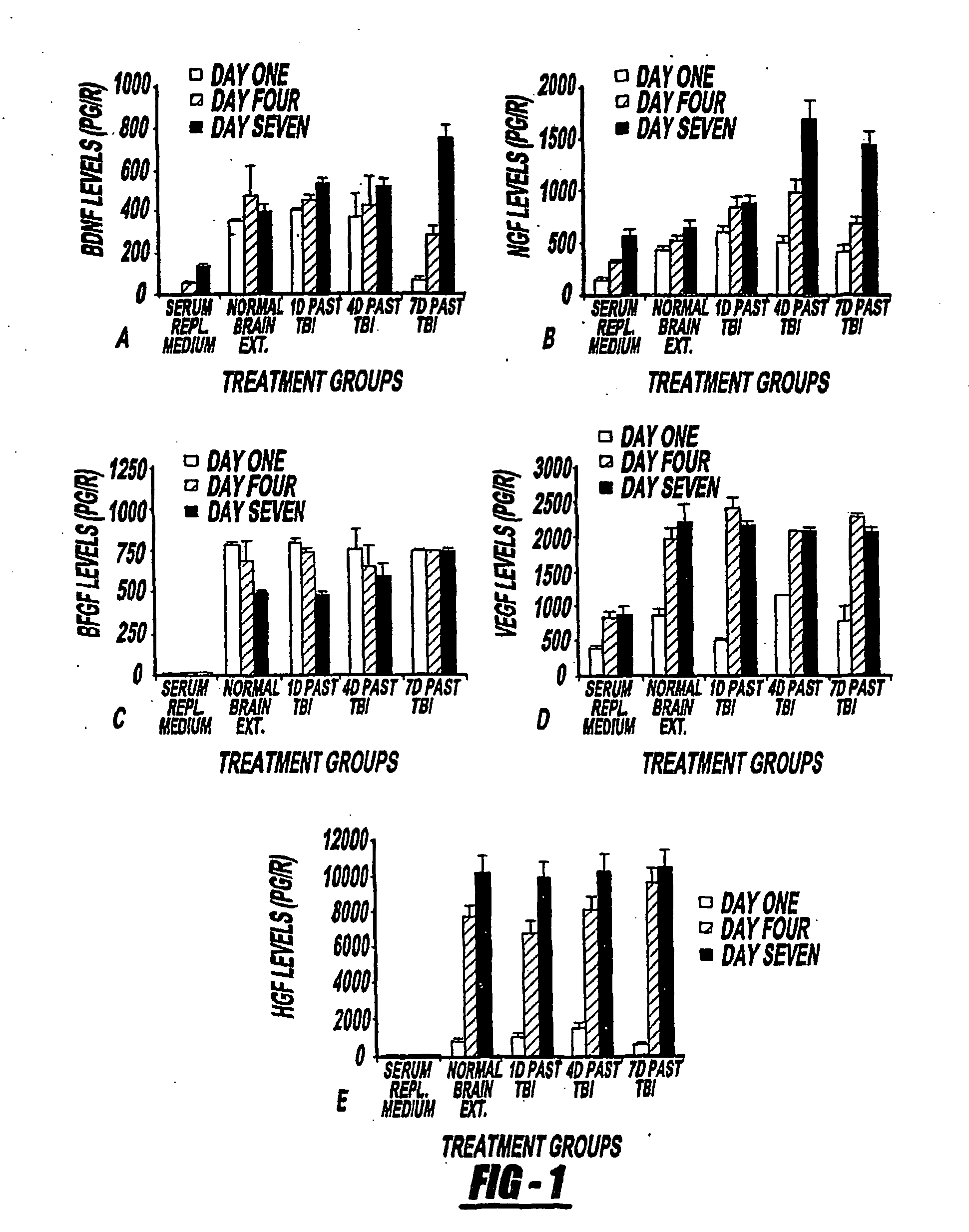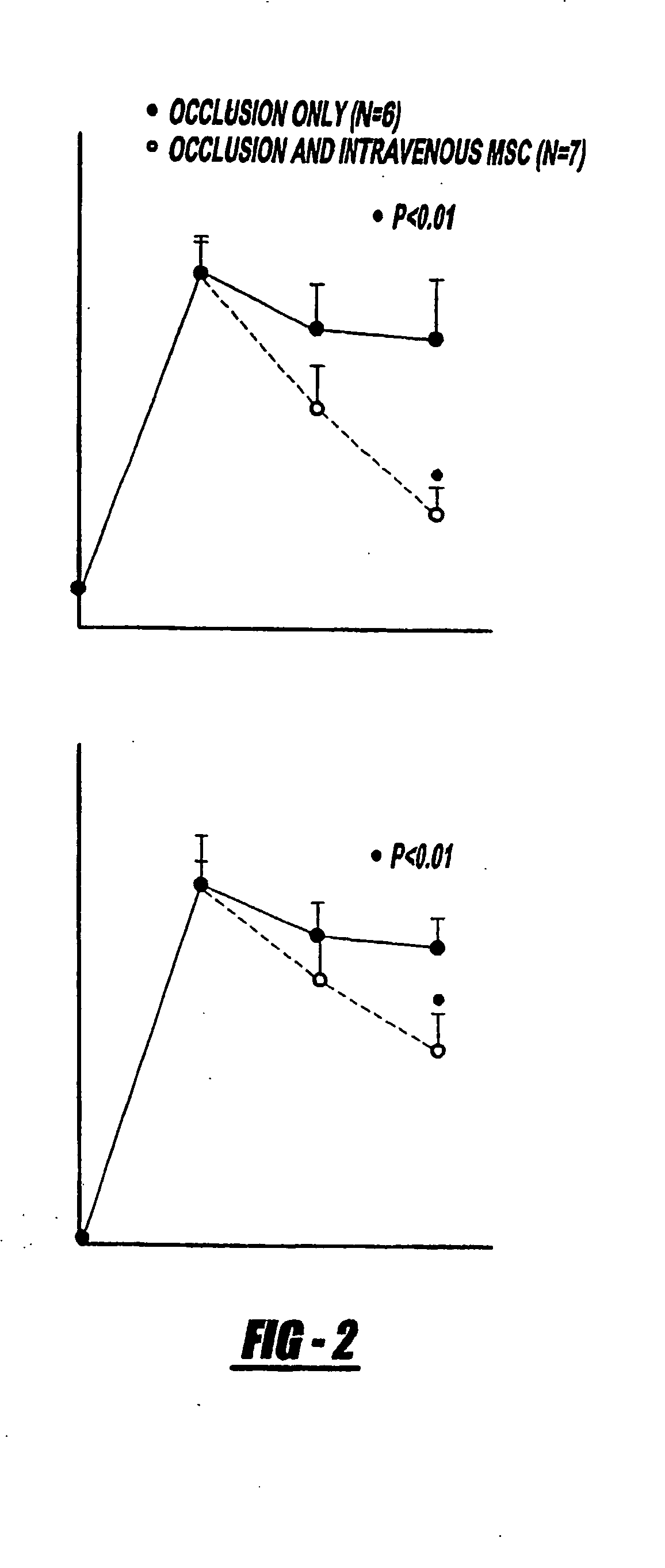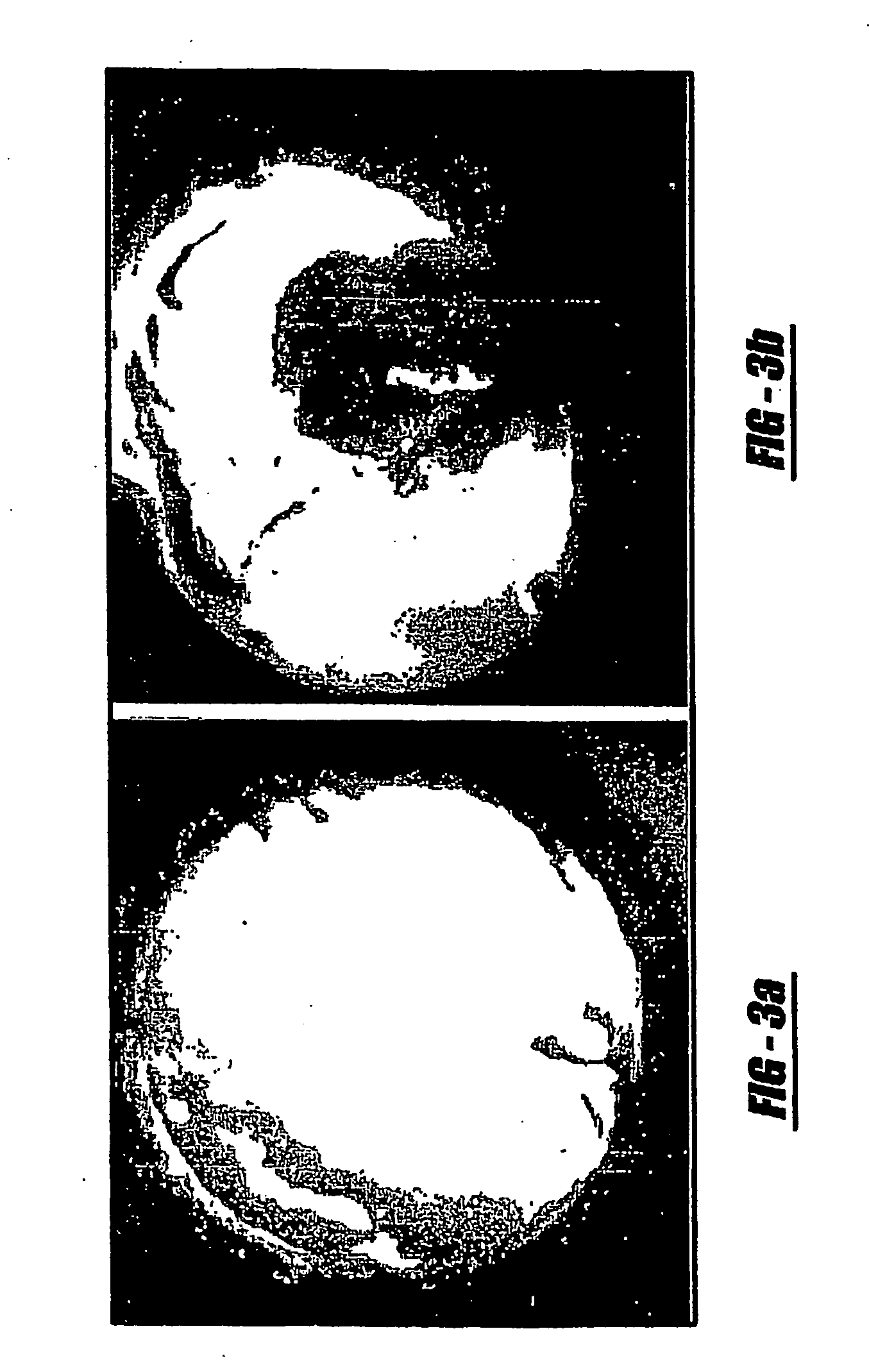Materials from bone marrow stromal cells for use in forming blood vessels and producing angiogenic and trophic factors
a technology of bone marrow stromal cells and stromal cells, which is applied in the field of therapeutics, can solve the problems of sudden and dramatic neurological impairment, tissue death and neurological impairment, and interruption of cerebral blood supply, and achieve the effect of increasing vasculogenesis inducing factors and amplifying the production of angiogenesis
- Summary
- Abstract
- Description
- Claims
- Application Information
AI Technical Summary
Benefits of technology
Problems solved by technology
Method used
Image
Examples
example 1
[0071] Treatment of traumatic brain injury (TBI) with bone marrow stromal cells (MSCs) improves functional outcome in rat. Tissue replacement is not the only compensatory avenue in cell transplantation therapy. As various growth factors have been shown to mediate the repair and replacement of damaged tissue, MSCs provide trophic support that plays a role in the treatment of damaged tissue. The response of human MSCs (hMSCs) to the cerebral tissue extract from TBI was investigated and tested to determine whether the TBI environment induces hMSC differentiation and growth factor secretion. hMSCs were cultured with TBI extracts in vitro and immunocytochemistry and quantitative sandwich enzyme-linked immunosorbent assay (ELISA) were performed. The results show that TBI conditioned hMSCs expressed specific cellular protein markers: NeuN for neuronal nuclear (0.2-0.5% of total hMSCs)., Tuj-1 for early neuronal differentiation and neurite outgrowth (6-10%), GFAP for astrocyte (4-7%) and MB...
example 2
Methods:
[0091] Rats were subjected to transient middle cerebral artery occlusion and IV injected with 3×106 hMSC 1 day after stroke. Functional outcome was measured before and 1, 7, and 14 days after stroke. Mixed lymphocyte reaction and the development of cytotoxic T lymphocytes measured the immune rejection of hMSC. A monoclonal antibody specific to human cellular nuclei (mAb1281) was used to identify hMSC and to measure neural phenotype. ELISA analyzed neurotrophin levels in cerebral tissue from hMSC-treated or nontreated rats. Bromodeoxyuridine injections were used to identify newly formed cells. Results: Significant recovery of function was found in rats treated with hMSC at 14 days compared with control rats with ischemia. Few (1 to 5%) hMSC expressed proteins phenotypic of brain parenchymal cells. Brain-derived neurotrophic factor and nerve growth factor significantly increased, and apoptotic cells significantly decreased in the ischemic boundary zone; significantly more br...
example 3
Treatment of Neural Injury: Preclinical Protocols
[0133] In investigating the hypothesis that MSC promote functional recovery after stroke, Applicants were confronted with various options for implementing preclinical cellular therapy protocols. Among issues to address were when and where to implant the cells. Since the interest is in restorative therapy, with the hypothesis that the size of the ischaemic lesion is not altered by effective restorative therapy, Applicants initially chose to treat animals 1 day or more after stroke.31,32 This timing is clinically reasonable. If deficits persist for a day after a stroke, the event is classified as a stroke and not as a transient ischaemic attack. At 1 day, patients tend to be stabilised, and the severity of the neurological deficits can be easily assessed.
[0134] The most direct route of placement of cells into brain is via surgical transplantation. Should the cells be placed within the lesion, in healthy non-ischaemic tissue, or withi...
PUM
| Property | Measurement | Unit |
|---|---|---|
| Time | aaaaa | aaaaa |
| Time | aaaaa | aaaaa |
| Density | aaaaa | aaaaa |
Abstract
Description
Claims
Application Information
 Login to View More
Login to View More - R&D
- Intellectual Property
- Life Sciences
- Materials
- Tech Scout
- Unparalleled Data Quality
- Higher Quality Content
- 60% Fewer Hallucinations
Browse by: Latest US Patents, China's latest patents, Technical Efficacy Thesaurus, Application Domain, Technology Topic, Popular Technical Reports.
© 2025 PatSnap. All rights reserved.Legal|Privacy policy|Modern Slavery Act Transparency Statement|Sitemap|About US| Contact US: help@patsnap.com



